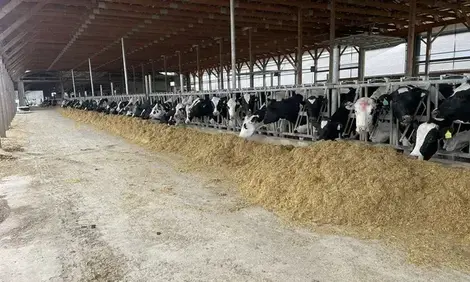



Livestock Farmers Have a Beef over Pricing Report
The vice president of the French national farming federation FNSEA, Christiane Lambert, has slammed "administrative zeal" on the part of economist Philippe Chalmin for his first outline report on the pricing of beef, writes Peter Crosskey.The outline report was broadcast online earlier this month (1) before the members of a prices and margins commission had had an opportunity to see or respond to Chalmin's preliminary findings.
"Only the processors and the retailers were consulted," Lambert told TheCattleSite.
The Observatoire de la Formation des Prix et des Marges was established as a result of pressure from livestock producers: the FNSEA is a founding member of the commission.
A senior government economist, Chalmin was put in charge of the commission late last year, with the task of identifying the costs in producing food in general but beef initially.
Unusually for the French, Chalmin worked through the holiday period to ensure that he could present the basis of a working methodology in time to start drafting beef production contract guidelines.
Under the new French law for the modernisation of agriculture (LMA) food producers will be expected to contractualise their dealings with suppliers.
Contractualisation was decreed by Bruno Le Maire for milk and fresh produce on New Year's eve, while the rest of the country was focussed on the festivities: beef contracts have been scheduled for April.
In Lambert's view: "[The preliminary report] was done too fast and the whole thing was presented to the media before we'd had a chance to see any of it."
In particular, Lambert is critical of the way that a diverse sector has been lumped together and its output aggregated into an "average cow carcase."
The result is a 52-page document, in which the upstream years spent raising finished cattle are summarily treated in couple of pages featuring three tables.
Chalmin admits that the diversity of livestock systems complicates the methodology enormously, but failed to draw fully on the specialists at his disposal. The result is a vague and unsatisfactory nod in the direction of an animal's life and its bearing on the finished quality as well as the price that it fetches.
Although Chalmin would have liked accurate and identifiable long series price data for the evolving price of retail products, that is locked away in commercially sensitive documents held by processors and retailers.
However, Appendix 6 does reproduce an industry snapshot compiled in 2009 by Christiane Lambert for a government committee to illustrate the price of butchery counter cutting steak and pre-packed minced steak (15 per cent fat) sold in a discounter.
More to the point, Chalmin is obliged to use privately-owned panel data for retail prices, warts and all.
Whatever misgivings he may have had about official index-based data, the retail data lumps together imports, suckler beef, beef cattle and cow beef all translated into retail formats.
Nevertheless, Chalmin insists on the primacy of price data, even though imported beef prices help to conceal the full extent of retail margins on domestically-produced beef by pulling down the average prices.
Since one reason for importing beef is to be able to select which cuts are shipped, imports can only distort Chalmin's upstream calculations as well as skewing any attempts at reconstituting the French-raised "average cow".
Just as 80 per cent of France's retail pigmeat sales come from loins and legs, so the retail beef range can hardly be expected to be represent more than a partial picture of a living bovine.
By setting aside industry-standard indexing that resolves some of the problems that inevitably arise from near-homogenous data, Chalmin risks an outbreak of "headline price syndrome" among his more disingenuous readers.
Some will ignore Chalmin's insistent and often-repeated distinction between gross margin and net profit in a bid to impose unwarranted supplier price cuts.
The concentration on retail data distorts other aspects of the industry: in the first instance, the seemingly inevitable notion that beef is only supplied to supermarkets overlooks the substantial tonnages sold into foodservice, local authorities and institutions.
As well as being outlets for a different range of cuts, the contracts involved should be sufficiently well-documented to furnish reliable price data.
This particular data-gathering operation might have got off to a flying start, but it has left a lot of hedges to mend in its wake.
The real risk is that administrative inertia will set in and ill-informed methodology will be perpetuated. Unlike the previous price observatories, however, this commission will prepare the ground for April's beef sector contractualisation.
Note:
An explanatory note (in French) of Philippe Chalmin's preliminary report can be downloaded here: http://agriculture.gouv.fr/IMG/pdf/110106_Note_d_orientation_Chalmin.pdf while the full text can be downloaded here: http://agriculture.gouv.fr/IMG/pdf/110106_Rapport_Chalmin_filmiere_bovine.pdf This file also includes the briefing document cited above.
(1) http://www.gouvernement.fr/gouvernement/remise-du-rapport-sur-la-filiere-bovine-par-philippe-chalmin-intervention-de-ph-chalmin and http://www.gouvernement.fr/gouvernement/remise-du-rapport-sur-la-formation-des-prix-et-des-marges-de-la-filiere-bovine-par-phil
January 2011


